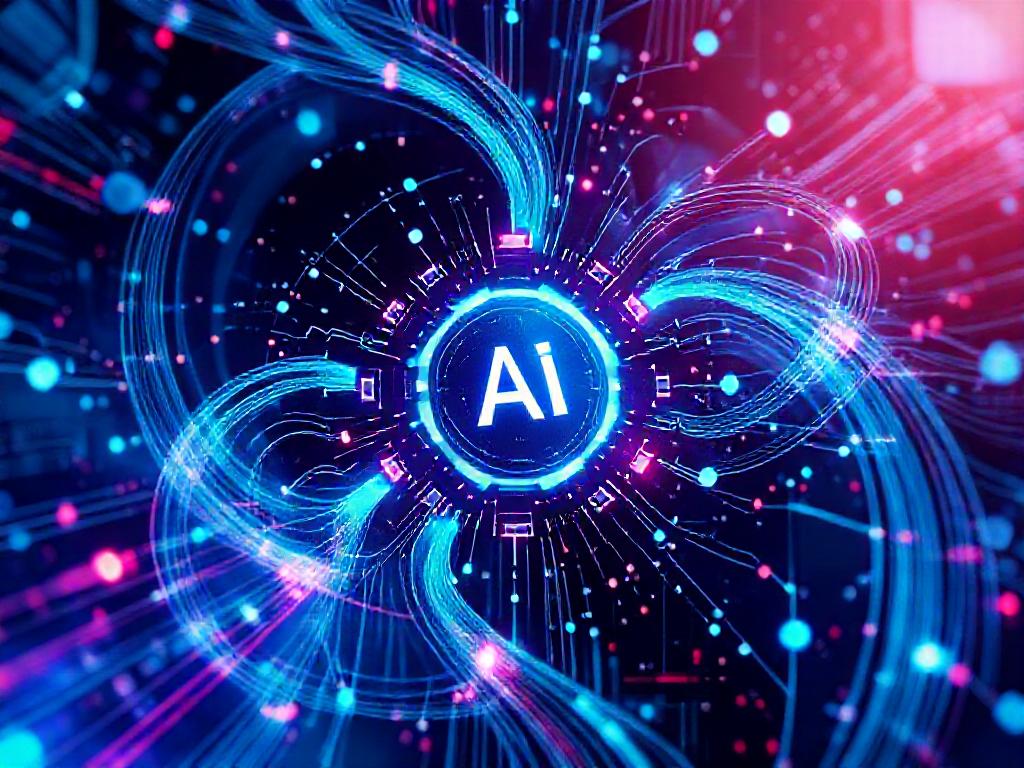Artificial intelligence (AI) is rapidly transforming various industries, automating tasks, and providing innovative solutions. Understanding the core techniques and applications of AI is crucial for anyone looking to leverage its power. This article delves into the world of AI, exploring its key techniques, applications, and the importance of data acquisition and preparation.

Understanding AI Techniques
Artificial intelligence (AI) encompasses various techniques designed to enable machines to perform tasks that would typically require human intelligence. These techniques include:
- Machine Learning (ML): ML algorithms analyze data to identify patterns and make predictions without explicit programming.
- Deep Learning (DL): DL, a subset of ML, models complex patterns using artificial neural networks with multiple layers.
- Natural Language Processing (NLP): NLP deals with the interaction between computers and human languages by analyzing, understanding, and generating human language in a valuable way.
- Robotic Process Automation (RPA): RPA automates repetitive tasks by mimicking human actions through the use of software robots or “bots.”
Applications of AI Techniques
Machine Learning: The Engine of AI
At the heart of many AI applications lies Machine Learning (ML). ML algorithms enable computers to learn from data without explicit programming.
Supervised Learning
In supervised learning, algorithms are trained on labeled datasets, where each data point is associated with a known outcome. This allows the model to learn the relationship between input features and desired outputs.
- Example: Training a model to identify images of cats and dogs based on a dataset of labeled cat and dog images.
Unsupervised Learning
Unsupervised learning, on the other hand, deals with unlabeled data. The algorithm identifies patterns and structures within the data without any guidance.
- Example: Clustering customers based on their purchasing behavior.
Reinforcement Learning
Reinforcement learning involves training an agent to make decisions in an environment to maximize rewards.
- Example: Training a game-playing AI to learn optimal strategies through trial and error.
Deep Learning: Unveiling Complex Patterns
Deep learning is a subset of ML that utilizes artificial neural networks with multiple layers. These networks can learn complex, hierarchical representations of data, enabling them to perform tasks like image recognition, natural language processing, and speech synthesis.
- Example: Training a deep learning model to translate text from one language to another.
Natural Language Processing (NLP): Bridging the Human-Computer Gap
NLP focuses on enabling computers to understand, interpret, and generate human language.
- Applications:
- Chatbots: Providing automated customer service or conversational experiences.
- Sentiment Analysis: Analyzing text to determine the emotional tone.
- Text Summarization: Condensing large amounts of text into concise summaries.
Predictive Analytics
Predictive analytics involves the use of statistical algorithms and machine learning techniques to identify the likelihood of future outcomes based on historical data. Applications include:
- Stock Market Forecasting: Predictive models help investors forecast stock prices and market trends, assisting with informed investment decisions.
- Supply Chain Logistics Optimization: Predictive analytics streamlines supply chain operations by optimizing delivery routes, reducing lead times, and minimizing costs.
- Customer Churn Prediction: Predictive models can identify customers at risk of leaving a service or subscription, helping businesses develop retention strategies.
Robotic Process Automation (RPA)
RPA is an AI technique used to automate repetitive tasks. Applications include:
- Data Entry Automation: RPA bots automate data entry tasks in administrative workflows, reducing manual effort and potential errors.
- Document Classification and Sorting: AI-powered systems classify and sort documents in legal or financial sectors, improving efficiency and accuracy.
Data Acquisition and Preparation: The Foundation of AI
The performance of any AI model depends heavily on the quality and quantity of data used for training.
Data Sources
- Structured Data: Organized data in databases or spreadsheets.
- Unstructured Data: Textual data, images, audio, and video.
Challenges in Data Acquisition
- Data Scarcity: Lack of sufficient data for training certain models.
- Data Bias: Data reflecting societal biases, leading to unfair or inaccurate results.
- Data Noise: Inaccurate or incomplete data that can hinder model performance.
Data Preparation
- Data Cleaning: Removing duplicates, errors, and inconsistencies.
- Data Transformation: Converting data into a suitable format for training.
- Feature Engineering: Selecting and transforming relevant features for the model.
Best Practices
- Collect High-Quality Data: Ensure data is accurate, relevant, and reliable.
- Mitigate Bias: Address potential biases in the data collection process.
- Clean and Preprocess Data: Remove irrelevant information and normalize data before feeding it into AI models.
Data Preparation: Techniques and Tools
Data preparation techniques include:
- Data Normalization: Scaling numerical data between a specific range.
- Data Transformation: Converting categorical data into numerical data, or encoding text data using techniques like one-hot encoding.
- Feature Engineering: Extracting valuable features from raw data.
Popular data preparation tools include:
- Pandas: A powerful data manipulation library for Python.
- NumPy: A library for the Python programming language, adding support for large, multi-dimensional arrays and matrices, along with a large collection of high-level mathematical functions to operate on these arrays.
- scikit-learn: A machine learning library for Python.
Key Takeaways
- AI techniques, such as ML, deep learning, and NLP, are revolutionizing various fields.
- Data acquisition and preparation are crucial for building effective AI models.
- Addressing challenges like data scarcity, bias, and noise is essential for ensuring fair and accurate AI applications.
FAQs
Machine Learning uses algorithms to learn patterns from data, while Deep Learning employs artificial neural networks with multiple layers to capture complex representations and features.
You can start with numerous online resources, courses, and communities. Begin by mastering programming fundamentals and exploring popular AI libraries and frameworks like TensorFlow and PyTorch.
High-quality data is crucial for accurate predictions and enhances the overall performance of AI models, leading to more reliable outcomes.
Popular data preparation tools in the Python ecosystem include Pandas, NumPy, and scikit-learn, which facilitate data manipulation and analysis.